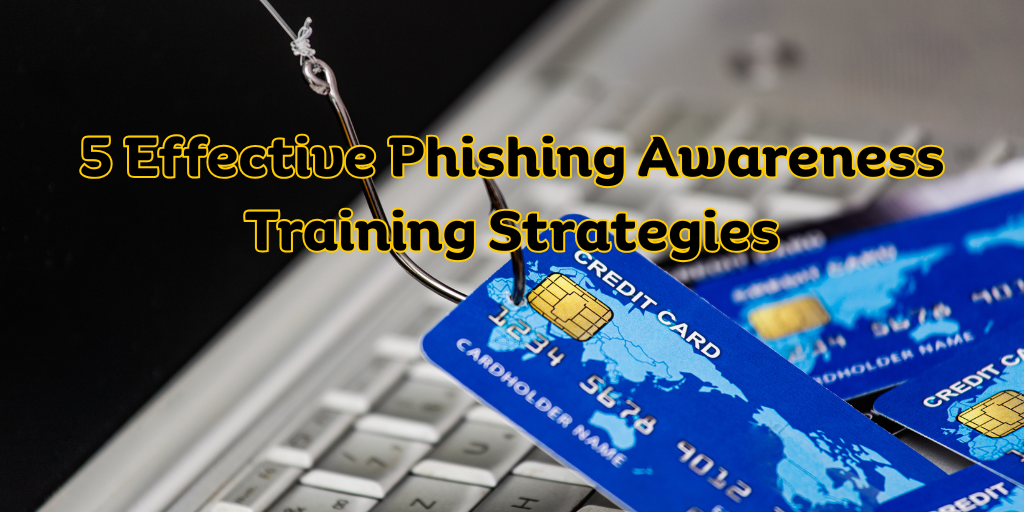Phishing is one of the biggest online threats today. It leads to financial losses and damages the company’s reputation. In this guide, we’ll show you how phishing awareness training can help protect your company. We’ll explain common phishing attacks, how to spot phishing emails, and how to prevent spear phishing. You’ll also learn important tips for raising employee cybersecurity awareness. By the end of this guide, you’ll be ready to tackle phishing threats.
What Is Phishing?
Phishing is when attackers pretend to be someone you trust to steal sensitive information, like passwords or credit card numbers. These attacks can take many forms, such as fake emails, text messages, or websites that look real but aren’t.
Although phishing is becoming more advanced, the best defense is training employees to recognize phishing attempts. Phishing awareness training helps workers spot phishing scams before they can cause harm.
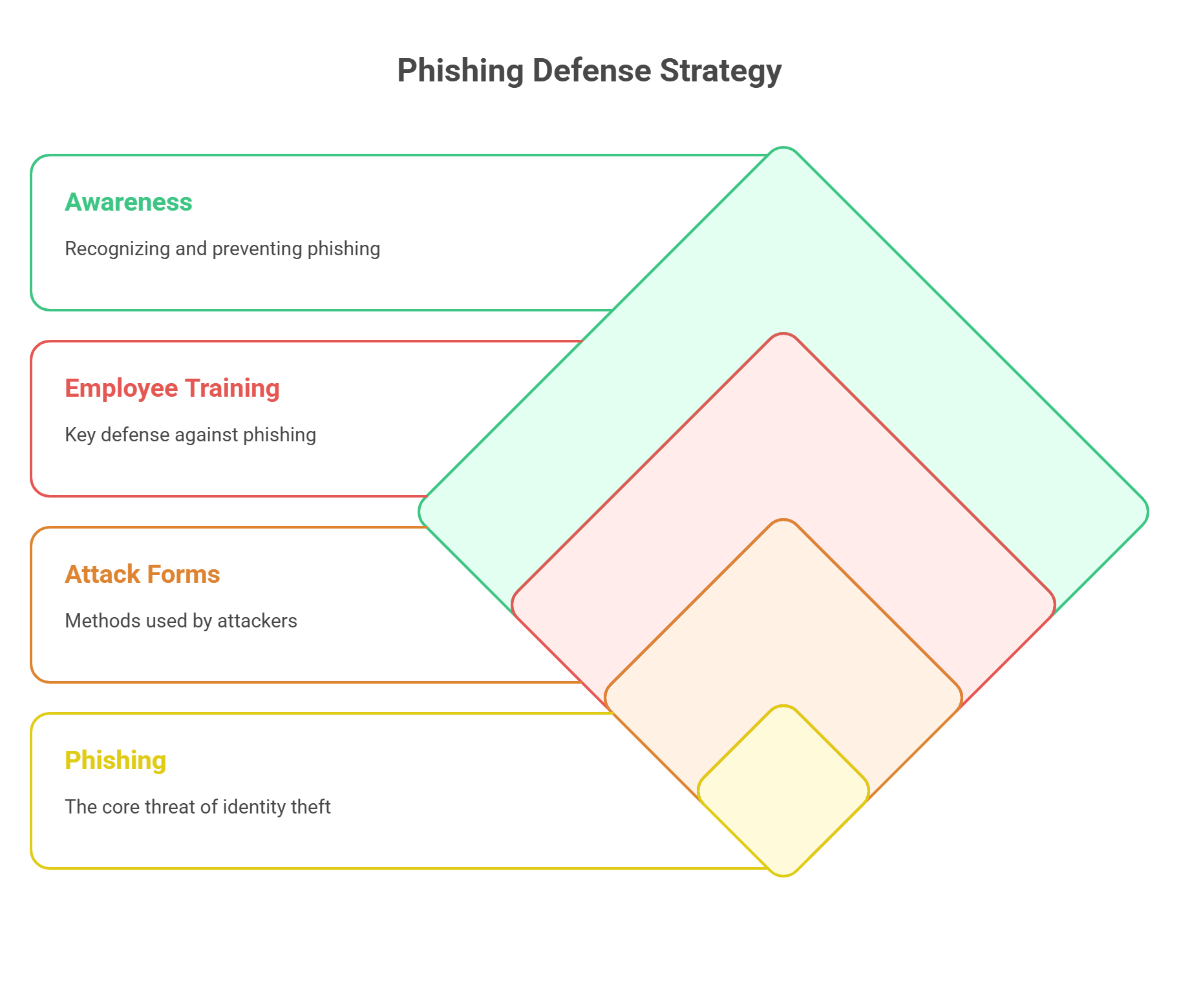
Why Phishing Awareness Training Is Key
One of the best ways to stop phishing is by training your employees. Here are some shocking stats:
-
The Anti-Phishing Working Group reports that phishing attacks are rising every year.
-
The Verizon Data Breach Investigations Report shows that 36% of data breaches come from phishing.
The risks of phishing are high, but training can greatly reduce the chances of employees falling for scams. Employees who are trained can easily spot phishing emails and know how to respond—whether that means deleting the email or reporting it.
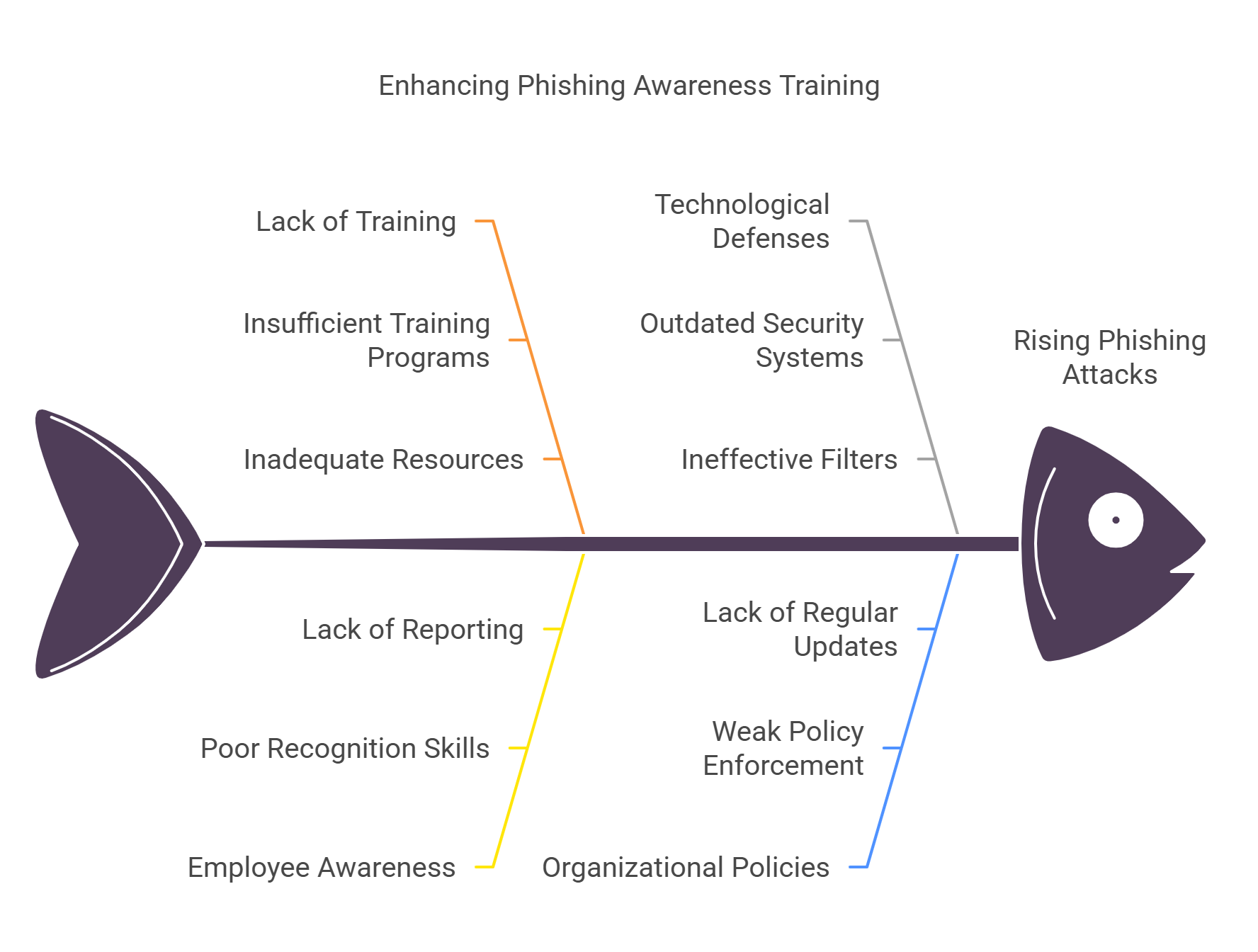
Phishing Attack Examples You Need to Know
Here are some common phishing attacks to watch out for:
1. Email Phishing
This is the most common type. Phishing emails look like they come from trusted sources, like banks or colleagues. They often ask you to click a link or provide personal information.
Example: An email that pretends to be from “PayPal,” asking you to click a link and update your account due to “security issues.”
2. Spear Phishing
Spear phishing is a more personalized attack. The attacker uses information about the victim to make the attack more convincing.
Example: An email that looks like it’s from your boss asking you to urgently transfer money.
3. Whaling
Whaling is a type of spear phishing that targets top executives. These emails use advanced tactics to trick high-level employees.
Example: A fake email from the company’s legal team asking for urgent review of a legal issue.
4. Vishing (Voice Phishing)
Vishing uses phone calls to trick people into giving out sensitive information.
Example: A phone call pretending to be from “Microsoft support,” asking for remote access to your computer.
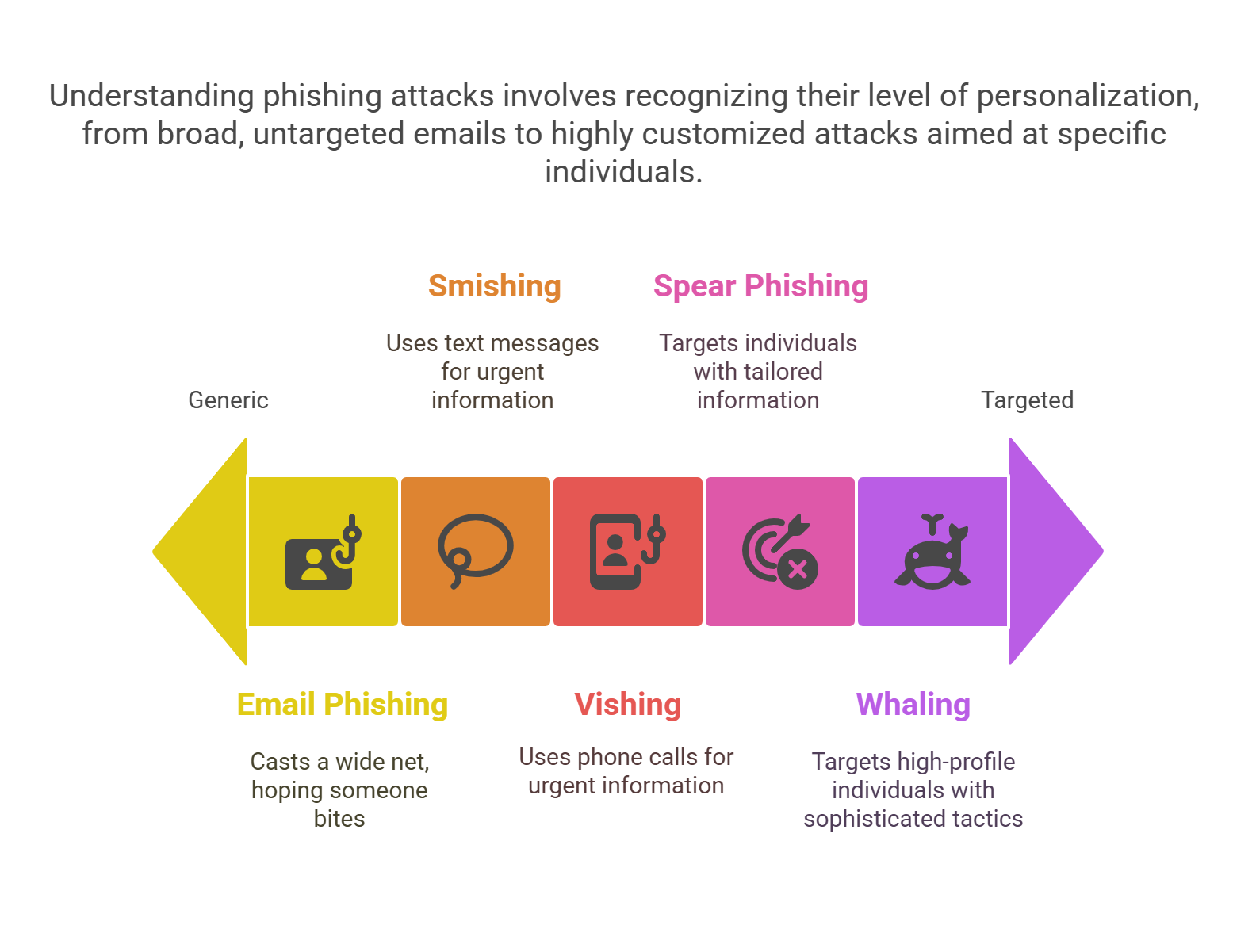
5. Smishing (SMS Phishing)
Smishing is phishing through text messages. The message often includes a link or phone number to call.
Example: A text claiming to be from a delivery company, asking you to confirm your information by clicking a link.
How to Spot Phishing Emails
Here’s how to recognize phishing emails:
1. Look for Suspicious Email Addresses
Phishing emails often come from addresses that look almost identical to legitimate ones, like “[support@paypa1.com]” instead of “[support@paypal.com].”
2. Generic Greetings
Phishing emails often use generic greetings like “Dear Customer” instead of addressing you by name.
3. Beware of Unusual Links and Attachments
Don’t click on links or open attachments from unknown sources. Always hover your mouse over a link to check where it leads.
4. Urgent Requests
Phishing emails often create a sense of urgency, saying something like “Act now or your account will be locked!”
5. Poor Spelling and Grammar
Phishing emails often have spelling mistakes or awkward phrasing. If the email seems unprofessional, it could be a scam.
5 Effective Phishing Awareness Training Strategies
Here are some proven strategies to improve your training:
1. Phishing Simulations
Studies show that sending fake phishing emails helps employees practice recognizing phishing attempts in a safe environment.
2. Short, Focused Lessons
Break down your training into small, easy-to-understand lessons. Short lessons are more effective than long, overwhelming ones.
3. Regular Updates
Phishing tactics change quickly. Make sure your training is updated every 6 to 12 months to stay current with new threats.
4. Encourage Reporting
Create a culture where employees feel comfortable reporting phishing attempts. This helps catch attacks early.
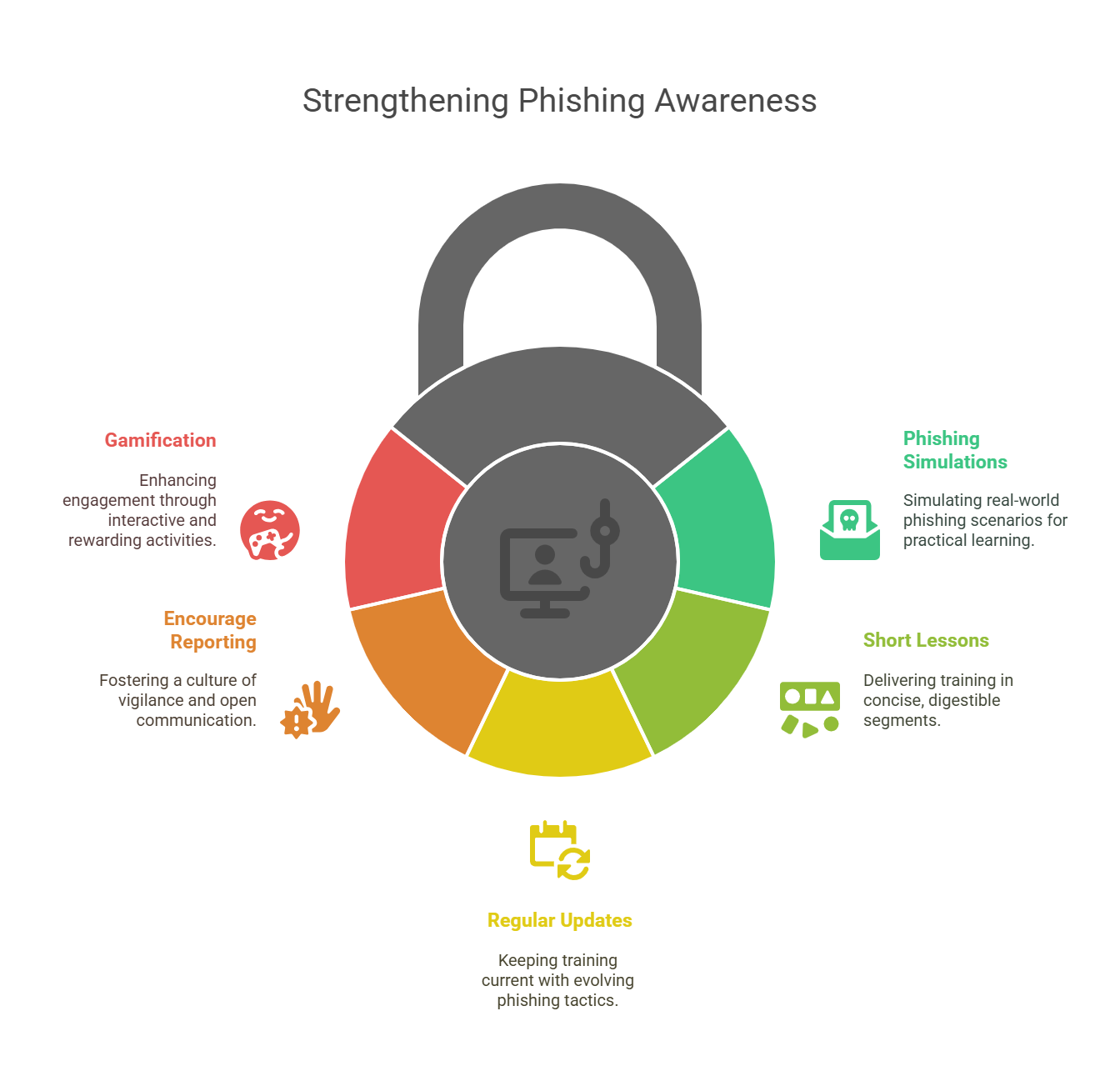
5. Use Gamification
Adding quizzes and rewards makes training more fun and engaging, helping employees retain information.
How XYZ Corporation Reduced Phishing by 50% in 6 Months
XYZ Corporation, a financial company, was facing many phishing attacks that threatened their systems and client data. After launching a phishing awareness program with simulations and interactive training, they reduced phishing incidents by 50% in just six months.
7 Hidden Phishing Dangers
Phishing can cause serious harm. Here are some dangers to watch out for:
1. Social Engineering
Phishing often tricks victims by pretending to be a trusted person or creating fake situations.
2. Malware Delivery
Some phishing emails contain malware that can damage your system or steal your data.
3. Financial Loss
Phishing scams can steal money, especially through wire transfer fraud.
4. Data Breaches
Phishing can expose sensitive information, leading to legal problems and reputation damage.
5. Credential Theft
Phishing can steal login credentials, allowing attackers to access secure systems.
6. Damage to Reputation
Phishing attacks can harm your company’s reputation, causing customers to lose trust.
7. Regulatory Penalties
Some industries face fines if they don’t protect data properly. Phishing can lead to costly penalties.
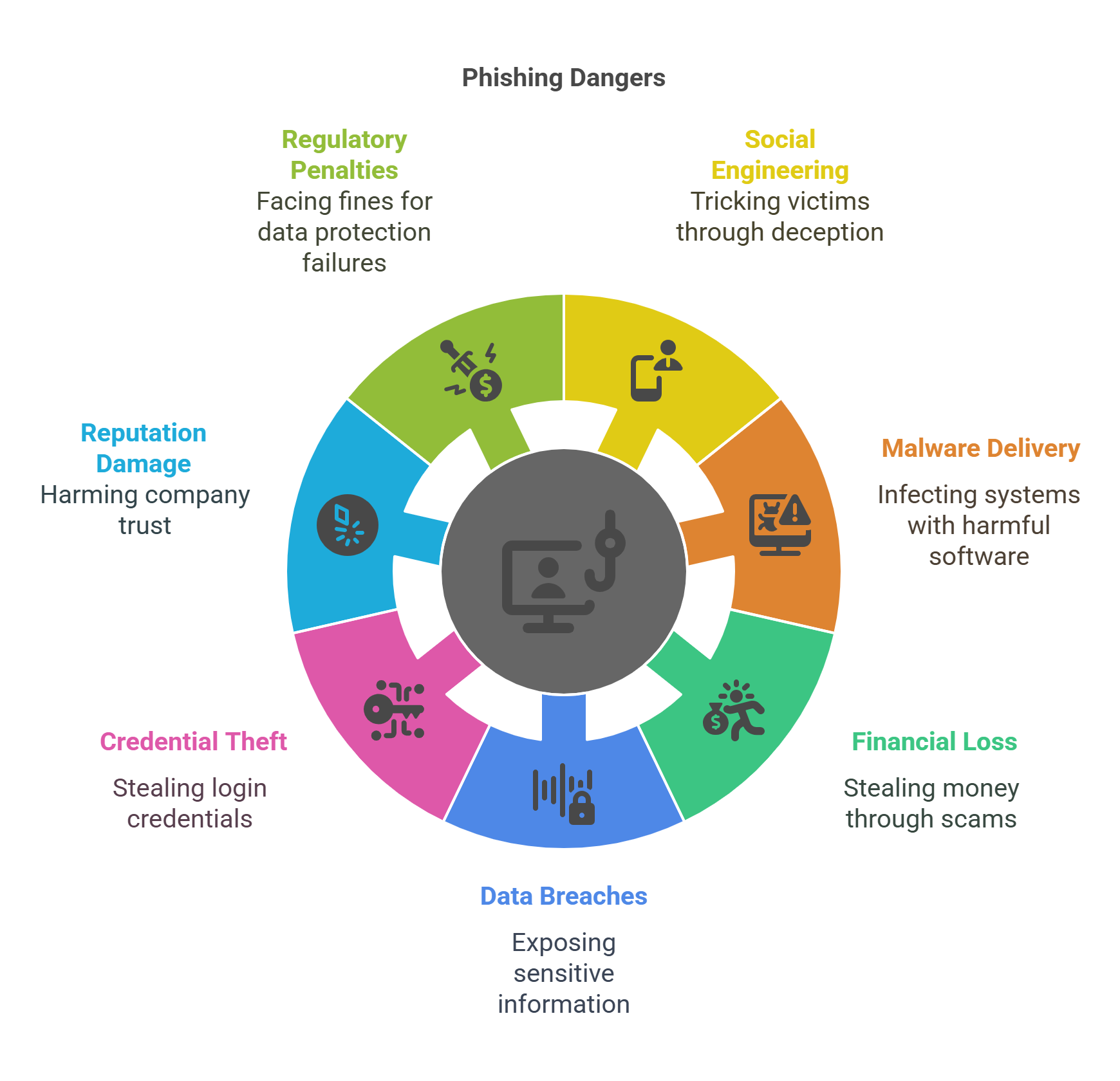
Expert Predictions: Phishing Trends in 2025
Experts predict these phishing trends by 2025:
-
AI-Powered Phishing: Attackers will use artificial intelligence to create more convincing phishing emails.
-
Voice Phishing Growth: With advances in AI voice technology, voice phishing will become harder to detect.
-
Smaller Targets: Phishing will focus more on smaller companies, which often have less protection.
Phishing Training Plan
Here’s how to set up your own phishing training program:
Step 1: Review Your Current Program
Evaluate your existing training to see where phishing education can be added or improved.
Step 2: Create Your Training Content
Develop lessons with quizzes, phishing simulations, and examples of current phishing threats.
Step 3: Run Phishing Simulations
Send simulated phishing emails to test employees’ ability to spot phishing attacks.
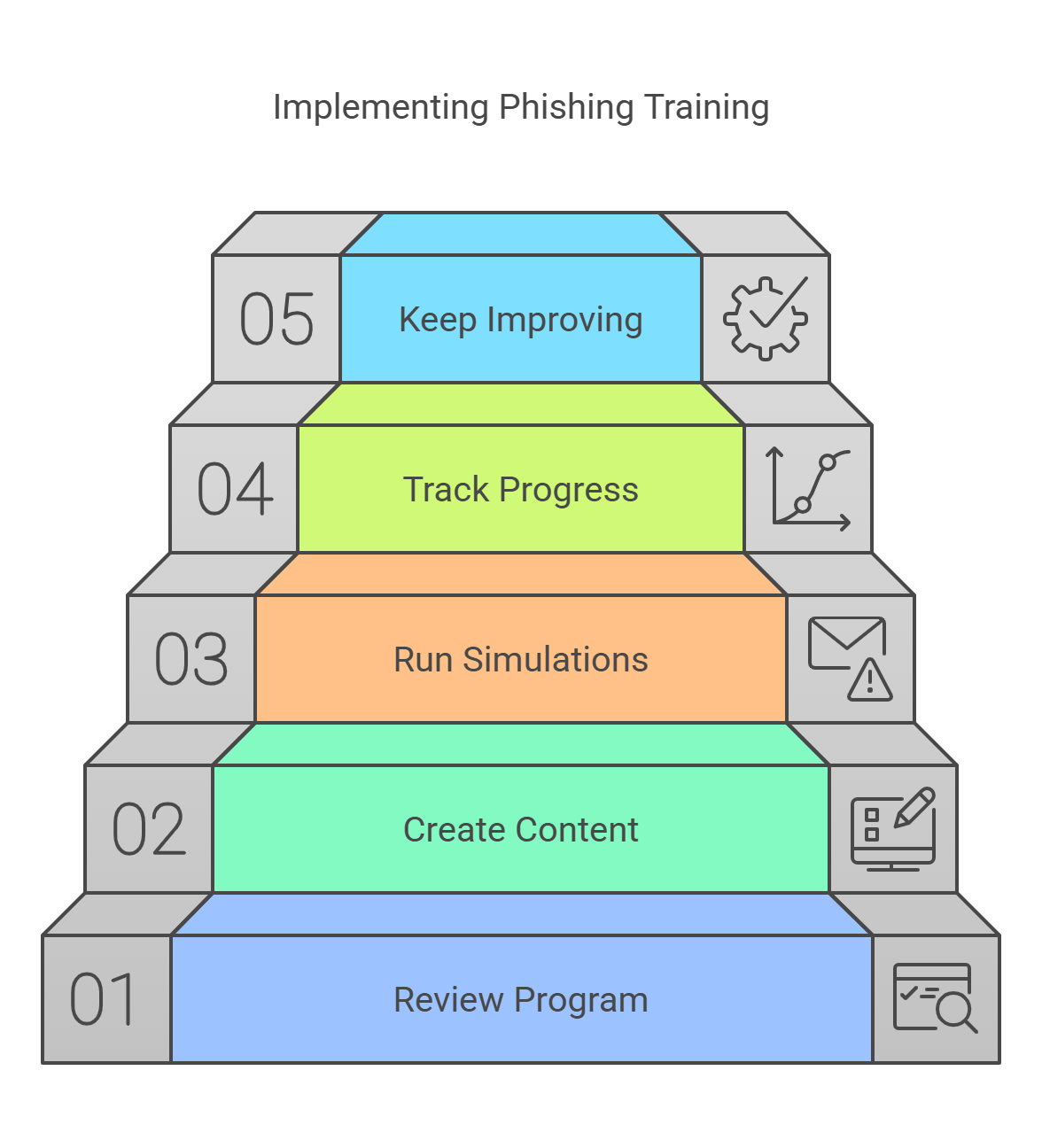
Step 4: Track Progress
Measure how well employees are identifying phishing threats and how your program is improving over time.
Step 5: Keep Improving
Update your training regularly to stay on top of new phishing tactics.
Conclusion
Phishing is a major threat to businesses. With proper phishing awareness training, you can protect your employees and company. Whether you’re just starting your training program or looking to improve it, this guide gives you the tools to make your organization more secure.
Quick Answer for Featured Snippets
What is phishing awareness training?
Phishing awareness training helps employees recognize and avoid phishing attacks. It includes lessons on spotting phishing emails and understanding common tactics used by attackers.
References:
-
Anti-Phishing Working Group (APWG), “Phishing Trends Report”
-
Verizon 2024 Data Breach Investigations Report
-
IBM Security, “The Cost of a Data Breach Report”
